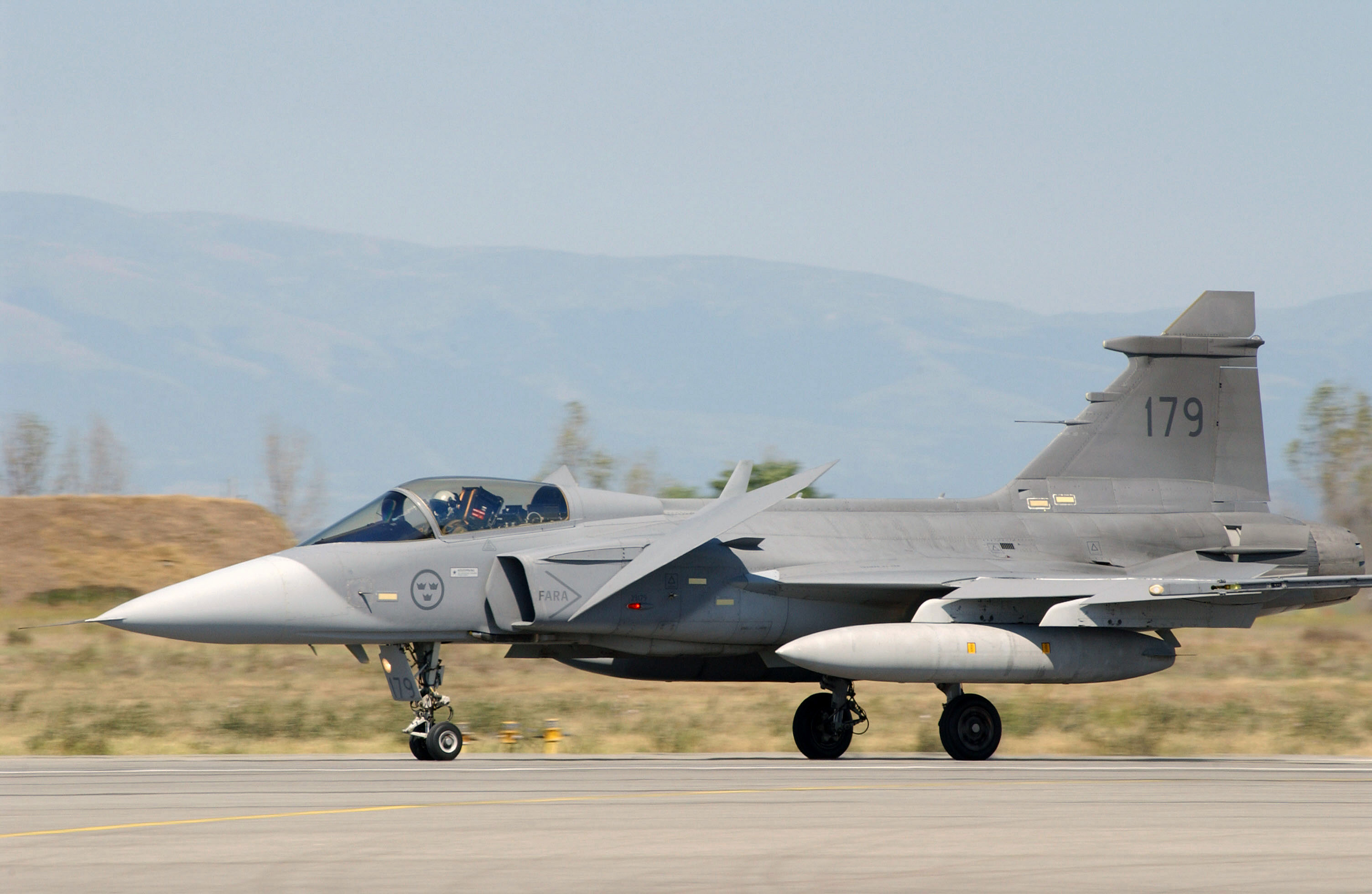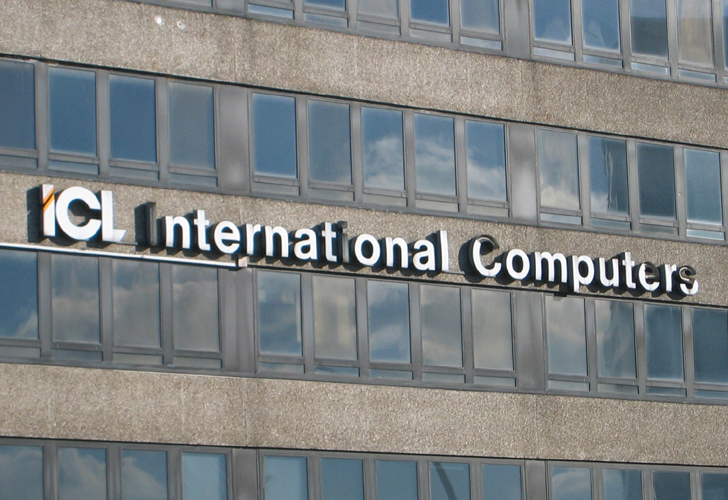|
Datasaab
Datasaab was the computer division of, and later a separate company spun off from, aircraft manufacturer Saab in Linköping, Sweden. Its history dates back to December 1954, when Saab got a license to build its own copy of BESK, an early Swedish computer design using vacuum tubes, from Matematikmaskinnämnden (the Swedish governmental board for mathematical machinery). This clone was completed in and was named SARA. Its computing power was needed for design calculations for the next generation jet fighter Saab 37 Viggen. Intending to develop a navigational computer to place in an airplane, a team led by Viggo Wentzel came up with an all transistorized prototype computer named D2, completed in 1960, which came to define the company's activities in the following two decades. This development followed two lines. The main purpose was the development of a navigational computer for Viggen. A spinoff was the production of a line of civilian mini and mainframe computers for the commer ... [...More Info...] [...Related Items...] OR: [Wikipedia] [Google] [Baidu] |
Datasaab D2
200px, Datasaab D2 computer at IT-ceum 200px, Front panel D2 was a concept and prototype computer designed by Datasaab in Linköping, Sweden. It was built with discrete transistors and completed in 1960. Its purpose was to investigate the feasibility of building a computer for use in an aircraft to assist with navigation, ultimately leading to the design of the CK37 computer used in Saab 37 Viggen. This military side of the project was known as SANK, or ''Saabs Automatiska Navigations-Kalkylator'' (''Saab's Automatic Navigational-Calculator''), and D2 was the name for its civilian application. The D2 weighed approximately 200 kg, and could be placed on a desktop. It used words of 20 bits corresponding to 6 decimal digits. The memory capacity was 6K words, corresponding to 15 kilobytes. Programs and data were stored in separate memories. It could perform 100,000 integer additions per second. Paper tape was used for input. Experience from the D2 prototype was the foundatio ... [...More Info...] [...Related Items...] OR: [Wikipedia] [Google] [Baidu] |
Stansaab
Stansaab AS was a company founded in 1971 in Barkarby, outside Stockholm, Sweden. The company was a joint venture between Standard Radio & Telefon AB (SRT), Saab-Scania, the car and aeroplane manufacturer and the state-owned Swedish Development Company. The company’s primary focus was systems for real-time data applied to commercial and aviation applications. In 1972, the company purchased the data terminal operations of Facit. In 1978, it was merged with the Data Saab division of Saab to create Datasaab. In 1981, Ericsson, believing that growth in telecoms would be lower than that in IT, purchased Datasaab and integrated it with two of its own divisions to form Ericsson Information Systems (EIS).{{cite web , url=http://se.services.fujitsu.com/veteran/04q4/041103.pdf , title=Ericsson, the Technology Integrator for the Office of the Future: EIS AB and Dreams on Computer-Telecom Convergence in the 1980s , author=Enrico Baraldi , publisher=Department of Business Studies, Uppsal ... [...More Info...] [...Related Items...] OR: [Wikipedia] [Google] [Baidu] |
Saab Group
Saab AB (originally , later just SAAB and Saab Group) is a Swedish aerospace and defence company, founded in 1937. Headquartered in Stockholm, the development and the manufacturing is undertaken in Linköping. Saab produced automobiles from 1947 until 1990 when the automobile division was spun off as Saab Automobile, a joint venture with General Motors. The joint venture ended in 2000 when GM took complete ownership. From 1968 onwards the company was in a merger with commercial vehicle manufacturer Scania-Vabis, known as Saab-Scania. The two were de-merged in 1995 by the new owners, Investor AB. Despite the demerger, both Saab and Scania share the right to use the griffin logo, which originates from the coat of arms of the Swedish region of Scania. History "Svenska Aeroplan AktieBolag" (Swedish for "Swedish Aeroplane Company Limited") (SAAB) was founded in 1937 in Trollhättan, with the merger of Svenska Aero AB (SAAB) and Linköping based ASJA the headquarters moved to Lin ... [...More Info...] [...Related Items...] OR: [Wikipedia] [Google] [Baidu] |
Nokia
Nokia Corporation (natively Nokia Oyj, referred to as Nokia) is a Finnish multinational telecommunications, information technology, and consumer electronics corporation, established in 1865. Nokia's main headquarters are in Espoo, Finland, in the greater Helsinki metropolitan area, but the company's actual roots are in the Tampere region of Pirkanmaa.HS: Nokian juuret ovat Tammerkosken rannalla (in Finnish) In 2020, Nokia employed approximately 92,000 people across over 100 countries, did business in more than 130 countries, and reported annual revenues of around €23 billion. Nokia is a listed on the |
SARA (computer)
SARA (SAABs räkneautomat, SAAB's calculating machine) was developed by SAAB when the capacity of BESK was insufficient for their needs. The project was started the fall of 1955 and became operational in 1956. SARA was built using the drawings of BESK that SAAB had bought for a symbolic sum and with the help of people who had worked with BESK, but didn't stay when Matematikmaskinnämnden decided that there would be no second generation. SARA wasn't used much, but it became the start of DataSAAB Datasaab was the computer division of, and later a separate company spun off from, aircraft manufacturer Saab in Linköping, Sweden. Its history dates back to December 1954, when Saab got a license to build its own copy of BESK, an early Swedish c ... and the development of CK37 and D2. IAS architecture computers Science and technology in Sweden {{Compu-hardware-stub ... [...More Info...] [...Related Items...] OR: [Wikipedia] [Google] [Baidu] |
Saab Viggen
The Saab 37 Viggen ( Swedish for ''"the Bolt"'' or ''"the Tufted Duck"'' ( see name)) is a retired Swedish single-seat, single-engine, short-medium range combat aircraft. Development work on the type was initiated at Saab in 1952 and, following the selection of a radical delta wing configuration, the resulting aircraft performed its first flight on 8 February 1967 and entered service in 21 June 1971. It was the first canard design produced in quantity.Fredriksen 2001, p. 279. The Viggen was also the most advanced fighter jet in Europe, albeit slower than the earlier MiG-21bis, until the introduction of the Panavia Tornado into operational service in 1981. Several distinct variants of the Viggen were produced to perform the roles of strike fighter (AJ 37), aerial reconnaissance (SF 37), maritime patrol aircraft (SH 37) and a two-seat trainer (Sk 37). In the late 1970s, the all-weather fighter-interceptor aircraft JA 37 variant was introduced. In November 2005, the Viggen wa ... [...More Info...] [...Related Items...] OR: [Wikipedia] [Google] [Baidu] |
Lysator
Lysator is an academic computer club at Linköping University, Sweden with almost 600 members. It is an independent non-profit society, separate from the students' union and the Faculty (teaching staff), faculties of the university. History Lysator was founded on 29 March 1973. The first computer used at Lysator was a Datasaab D21, delivered to Lysator on 25 May 1973. Later in the decade, members of Lysator developed and initially built a microcomputer, the LYS-16, which was advanced for its time due to its 16-bit word size. In February 1993, Lysator put up the first web server in Sweden, among the first 10–15 in the world. On 30 July 2010, Lysator began migrating to a new 3Rack unit, U Data center, home Rack-mount, rack, increasing their available storage space from 700Gigabytes, GB to 13terabyte, TB. Projects hosted by Lysator Lysator has been a starting ground for many notable projects, some of which have since become independent from the club: * Project Runeberg ... [...More Info...] [...Related Items...] OR: [Wikipedia] [Google] [Baidu] |
International Computers Limited
International Computers Limited (ICL) was a British computer hardware, computer software and computer services company that operated from 1968 until 2002. It was formed through a merger of International Computers and Tabulators (ICT), English Electric Computers (EEC) and Elliott Automation in 1968. The company's most successful product line was the ICL 2900 Series range of mainframe computers. In later years, ICL diversified its product line but the bulk of its profits always came from its mainframe customers. New ventures included marketing a range of powerful IBM clones made by Fujitsu, various minicomputer and personal computer ranges and (more successfully) a range of retail point-of-sale equipment and back-office software. Although it had significant sales overseas, ICL's mainframe business was dominated by large contracts from the UK public sector, including Post Office Ltd, the Inland Revenue, the Department for Work and Pensions and the Ministry of Defence. It als ... [...More Info...] [...Related Items...] OR: [Wikipedia] [Google] [Baidu] |
BESK
BESK (''Binär Elektronisk SekvensKalkylator'', Swedish for "Binary Electronic Sequence Calculator") was Sweden's first electronic computer, using vacuum tubes instead of relays. It was developed by '' Matematikmaskinnämnden'' ( Swedish Board for Computing Machinery) and for a short time it was the fastest computer in the world. The computer was completed in 1953 and in use until 1966. The technology behind BESK was later continued with the transistorized FACIT EDB and FACIT EDB-3 machines, both software compatible with BESK. Non-compatible machines highly inspired by BESK were SMIL made for the University of Lund, ''SAABs räkneautomat'' SARA, "SAAB's calculating machine", and DASK made in Denmark. BESK was developed by the Swedish Board for Computing Machinery (Matematikmaskinnämnden) a few years after the mechanical relay computer BARK (Binär Aritmetisk Relä-Kalkylator, Swedish for "Binary Arithmetic Relay Calculator"). The team was initially led by Conny Palm, who ... [...More Info...] [...Related Items...] OR: [Wikipedia] [Google] [Baidu] |
Soviet Union
The Soviet Union,. officially the Union of Soviet Socialist Republics. (USSR),. was a List of former transcontinental countries#Since 1700, transcontinental country that spanned much of Eurasia from 1922 to 1991. A flagship communist state, it was nominally a Federation, federal union of Republics of the Soviet Union, fifteen national republics; in practice, both Government of the Soviet Union, its government and Economy of the Soviet Union, its economy were highly Soviet-type economic planning, centralized until its final years. It was a one-party state governed by the Communist Party of the Soviet Union, with the city of Moscow serving as its capital as well as that of its largest and most populous republic: the Russian Soviet Federative Socialist Republic, Russian SFSR. Other major cities included Saint Petersburg, Leningrad (Russian SFSR), Kyiv, Kiev (Ukrainian Soviet Socialist Republic, Ukrainian SSR), Minsk (Byelorussian Soviet Socialist Republic, Byelorussian SSR), Tas ... [...More Info...] [...Related Items...] OR: [Wikipedia] [Google] [Baidu] |
Technology Transfer
Technology transfer (TT), also called transfer of technology (TOT), is the process of transferring (disseminating) technology from the person or organization that owns or holds it to another person or organization, in an attempt to transform inventions and scientific outcomes into new products and services that benefit society. Technology transfer is closely related to (and may arguably be considered a subset of) knowledge transfer. A comprehensive definition of technology transfer today includes the notion of collaborative process as it became clear that global challenges could be resolved only through the development of global solutions. Knowledge and technology transfer plays a crucial role in connecting innovation stakeholders and moving inventions from creators to public and private users. Intellectual property (IP) is an important instrument of technology transfer, as it establishes an environment conducive to sharing research results and technologies. Analysis in 2003 sho ... [...More Info...] [...Related Items...] OR: [Wikipedia] [Google] [Baidu] |





